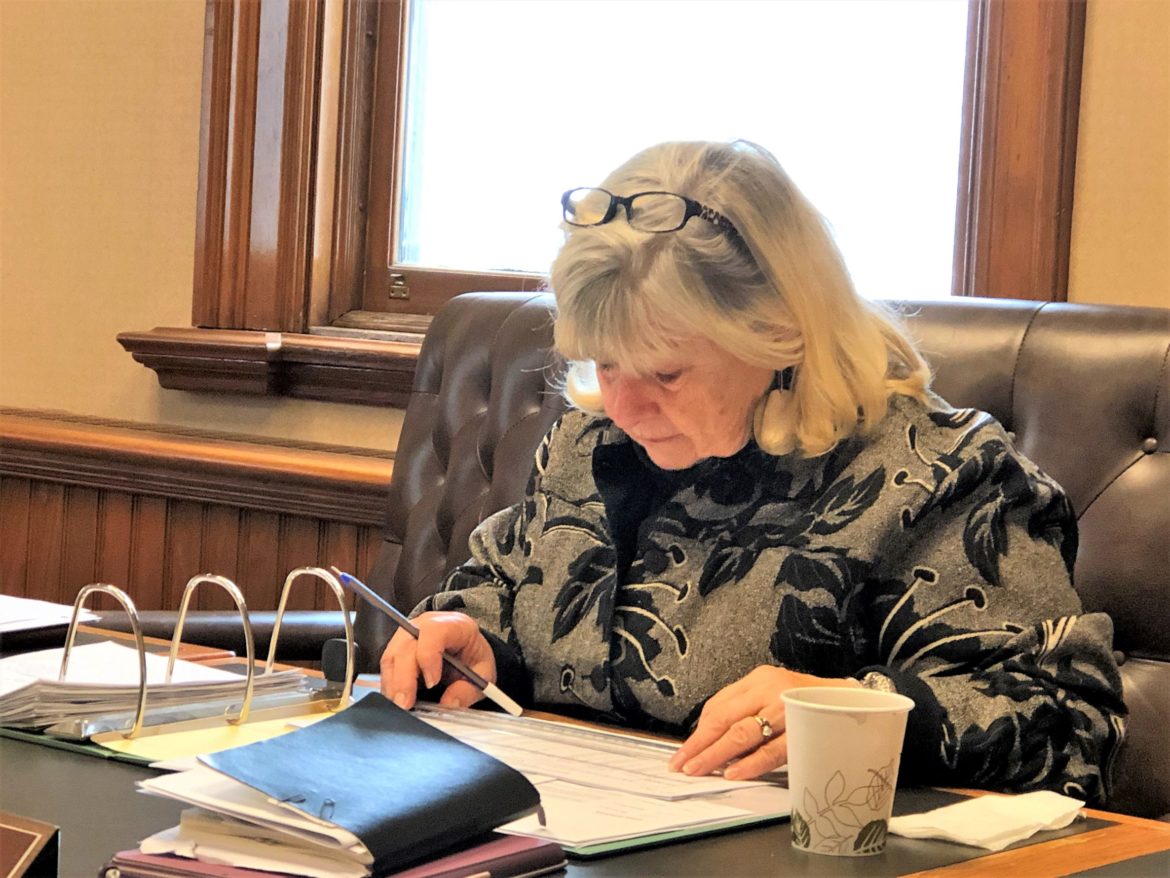By GAIL OBER, InDepthNH.org
CONCORD – The House Finance II Committee discussed how to level the playing field on school district funding while addressing accountability during a work session Monday with key members of the Education Committee fielding tough questions.
There are a number of bills that address various aspects of education disparities and funding levels winding their way through the legislature, but most of Monday’s discussion focused on House Bill 709-FN.
“We need to identify communities with low, low (property) valuations,” said Rick Ladd, a Haverhill Republican who is the ranking member of the Education Committee. He said community equalized property values per pupil range from $306,000 in Berlin to as much a $7 million in Moultonborough.
Ladd went on to say that Berlin has eliminated 21 teacher positions in the past three years and is now looking to cut programming and eliminate its last elementary school. He attributed this to the loss of about $250,000 a year since the decreases in state stabilization aid began.
HB 709-FN started out by freezing stabilization aid at 2018 levels, but now reverts to 2016 levels. Stabilization aid would be eliminated in FY 2022 and replaced by a funding formula created in HB 709-FN.
“HB 709-FN serves as a bridge,” said Rep. Dave Luneau, D-Hopkinton, who is the vice chair of the Education Committee.
The bill, as amended by the Education Committee, changes per pupil aid amounts for adequate education grants and establishes additional free- and reduced-lunch formulas, the only measure of poverty whose data is available to the state.
The proposed formula includes differential aid such as English as a second language with capped amounts, eliminates stabilization grants, but holds harmless school districts that would receive less state aid.
Legislative aids said the fiscal notes are incomplete because it’s difficult to determine a municipality’s future equalized property value per student.
They also said it is unclear how this bill would affect charter school funding because the number of students in 2022 is unknown.
For those communities on the lower property valuation scale, as much as $1 million in aid could be available, depending on how many students attend the school, which is called average daily membership.
Committee members were of two minds and one heart.
All agreed something must be done, but the three Republican members said there needs to be more accountability. They expressed concern that the projected numbers were not adequately data-driven.
“We keep putting money into free- and-reduced (lunch), but we get no results,” said Rep. Kenneth Weyler, a Kingston Republican. “Is there any accountability?”
Luneau and Ladd said every district’s planned use for the aid would have to be approved by the state Commissioner of Education or his staff, as has always been the case.
Vice Chairman Mary Heath, who is a former Assistant Education Department Commissioner, confirmed that approval is necessary.
Finance II Chair Rep. Susan Ford, an Easton Democrat, expressed concern about provisions for transitory students, or those who move in and out of a district. Her years of experience as an educator revealed that many of these students struggle, she said.
She worries that the bill establishing set cutoffs for the number of students in the disparity aid categories could result in the loss of up to $1 million because the student population in a specific category dropped below a certain number, potentially because of the loss of one student.
Luneau and Ladd agreed there should be a more graduated scale, where nuances in population and average daily student count could be taken into account.
Franklin Rep. Werner Horn, a Republican who represents one of the communities with the lowest equalized property value in the state, said he wants more data incorporated into the projected formula.
Horn was also concerned that HB 709-FN requires more reporting activity, which he said could increase the burden on school and state administrators.
Rep. Joe Pitre, a Farmington Republican, said he wants to know more about teacher training because in his experience more training is not paying off in better achievement scores.
Ladd told the Committee that of the $3,460 allowed for adequacy aid, $20 is set aside for teacher training. “Professional development is key to how a school functions,” Ladd said.
Weyler said that the State-Wide Education Property Tax revenue (SWEPT) should stay in the district, warning that removing it or creating donor communities is a deal-breaker for many other state representatives.
“All states are dealing with this,” said Ford in reply. “Education should not depend on a zip code.”
Members said the bill would be reworked by the committee and presented anew in an upcoming work session.
House Bill 686-FN extends the interest and dividends tax to capital gains taxes over $5,000 and is calculated on the amount reported on federal tax returns.
The formula as presented would increase aid from $914 million to $999 million or about $85 million.
The bill passed in the Ways and Means Committee last week, but Ford said that revenue is not a primary concern with the Finance Committee.





